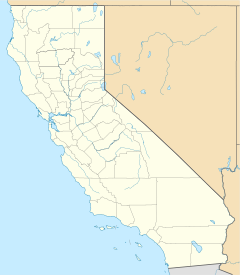Huntington Desert Garden
| Huntington Desert Garden | |
|---|---|

|
|
| Type | Public |
| Location | San Marino, California |
| Nearest city | San Marino, California |
| Coordinates | 34°07′38″N 118°06′36″W / 34.1272°N 118.11°WCoordinates: 34°07′38″N 118°06′36″W / 34.1272°N 118.11°W |
| Area | 10 acres (4.0 ha) |
| Created | 1900s |
| Status | Open year round |
| Website | Huntington Desert Garden website |
The Huntington Desert Garden is part of The Huntington Library, Art Collections and Botanical Gardens in San Marino, California. The Desert Garden is one of the world's largest and oldest collections of cacti, succulents and other desert plants, collected from throughout the world. It contains plants from extreme environments, many of which were acquired by Henry E. Huntington and William Hertrich (the first garden curator) in trips taken to several countries in North, Central and South America. One of the Huntington’s most botanically important gardens, the Desert Garden brought together a group of plants largely unknown and unappreciated in the beginning of the 1900s. Containing a broad category of xerophytes (aridity-adapted plants), the Desert Garden grew to preeminence and remains today among the world’s finest, with more than 5,000 species in the 10 acre (4 ha) garden.
Mr. Huntington was not initially interested in establishing a Desert Garden. He did not like cacti at all, due to some unfortunate prickly pear encounters during railroad construction work. But Hertrich was persistent, and, once won over, Mr. Huntington built a railway spur to his garden, to bring in rock, soil and plants by the carload. As Gary Lyons, a later curator, remarked, it's very convenient to have a rail spur, and deep pockets, when you're building a big garden. A trip to Arizona in 1908 filled three railroad cars for the trip back to the garden.
Famed Brazilian landscape architect Roberto Burle Marx called the Huntington Desert Garden "the most extraordinary garden in the world."
The most significant collections are agave and related genera (Agavaceae), aloe (Aloaceae), terrestrial bromeliads (Bromeliaceae), cacti (Cactaceae), echeveria, crassula, sedum and related genera of succulents (Crassulaceae), euphorbia (Euphorbiaceae), and fouquieria (Fouquieriaceae), as well as nontaxonomic caudiciforms.
...
Wikipedia


